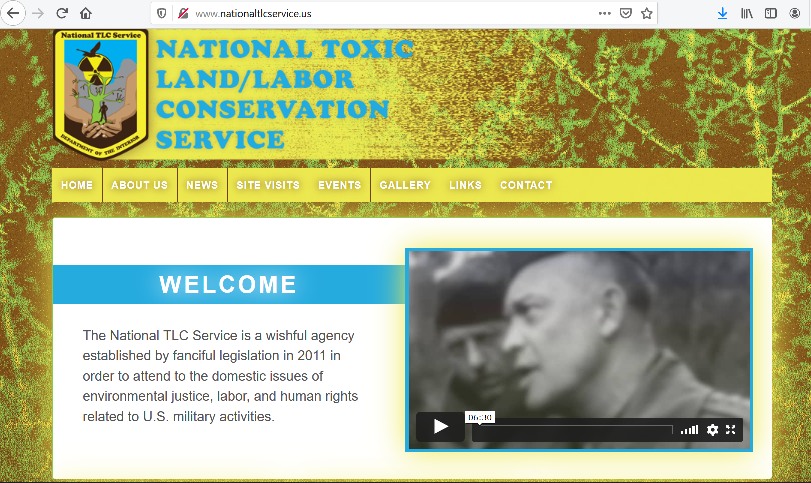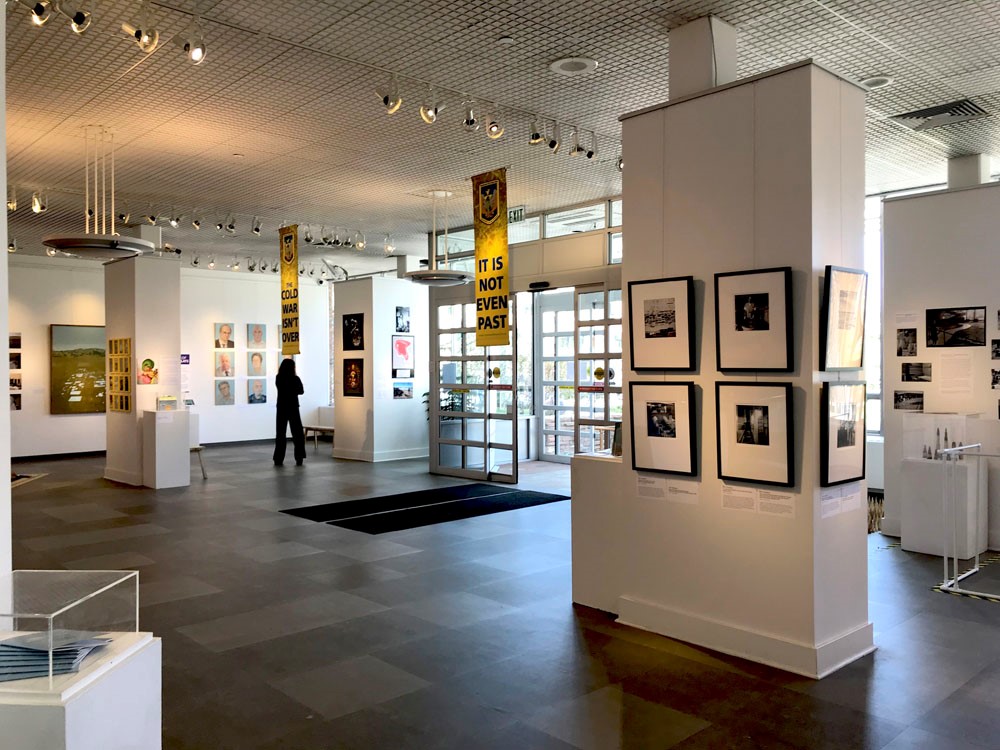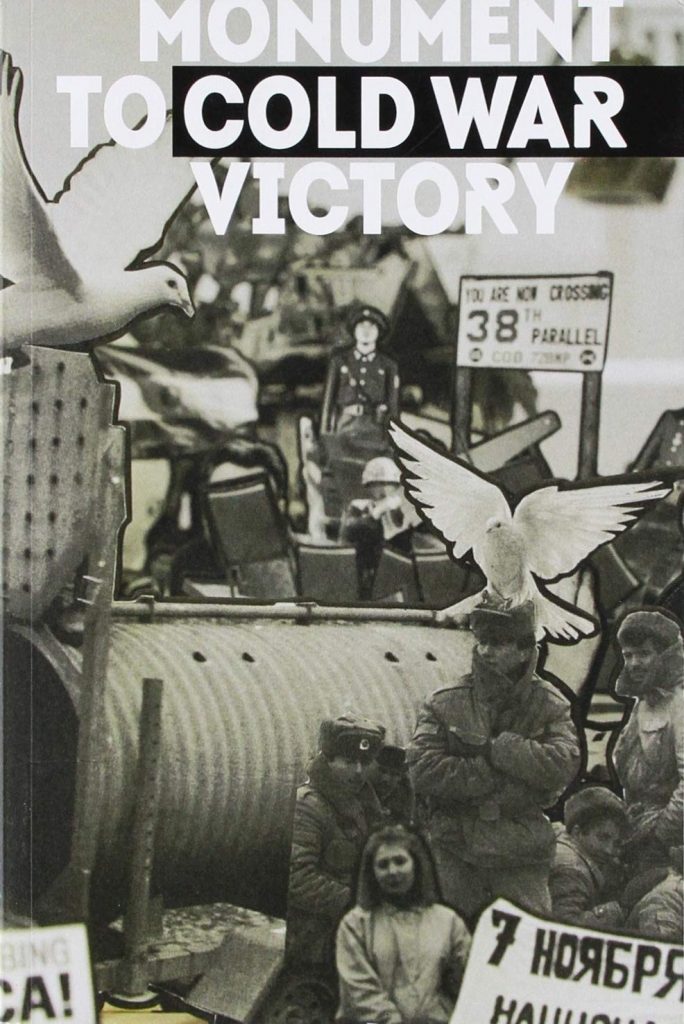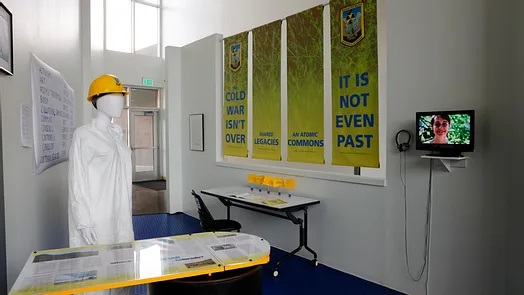The National Toxic Land/Labor Conservation Service (“National TLC Service”) is an art and research project taking the form of a speculative government agency dedicated to the vigilant detection and continual exposition of the environmental, human health, and cultural impacts of the American nuclear complex. Established by fictive legislation in 2011, the Service is charged with developing cultural programs that address domestic issues of environmental justice, labor, and human rights related to U.S. military activities. Blending satire and sincerity, we devise participatory public workshops on Cold War environmental memory using an aesthetic of bureaucratic camp. Our primary initiative is the creation of the speculative National Cold War Monuments and Environmental Heritage Trail. Additionally, we conduct tours, site visits, and reviews of Cold War heritage sites as they are currently interpreted. The Service’s organizational mission serves as a platform to explore further ties between policy and art practice.
Visit the National TLC Service Website for the Official Agency Video and full documentation.

Scholarly Publication
Sarah Kanouse and Shiloh Krupar, 2022, “The National Toxic Land/Labor Conservation Service: 10-Year Final Report on Public Agency Organizing and Operational Responses to Cold War Legacies and the Nuclear Stockpile,” in Toxic Immanence: Decolonizing Nuclear Legacies and Futures, ed. Rodica-Livia Monnet (McGill-Queen’s University Press, 2022), 174-196
Exhibitions
Champaign, IL – Krannert Art Museum, “Hot Spots: Radioactivity and the Landscape,” October 17, 2019-March 21, 2020
Denver, CO – Denver Public Library, “Facing Rocky Flats,” August 26-October 31, 2018
Boulder, CO – Canyon Gallery, “Facing Rocky Flats,” April 27-June 10, 2018
Colorado Springs, CO – IDEA Space, “Atomic Landscapes,” March 21-May 7, 2016
Boston, MA – Proof Gallery, “Boston Does Boston 9,” January 23-February 20, 2016
New York, NY – 41 Cooper Gallery, “Monument to Cold War Victory,” October 14-November 8, 2014
Champaign, IL – Figure One Gallery, “National TLC Service Mobile Field Office,” November 2013
Iowa City, IA – Iowa City Public Library, “Nuclear Nighborhoods,” August 2013
Fairfax, VA – Mason Hall Atrium Gallery, George Mason University, “EcoCultures,” September 22-October 6, 2011
Brooklyn, NY – Momenta Arts, “Institute for Wishful Thinking,” April 1-May 8, 2011
Charrettes / Public Workshops
Colorado Spring, CO – IDEA Space and Colorado College, March 2016
Champaign, IL – Figure One Gallery and the University of Illinois Urbana-Champaign, November 2013

The National TLC Service was featured in a group exhibition about the now-closed Rocky Flats nuclear weapons facility just outside of Denver. Curated by Jeff Gipe, “Facing Rocky Flats” included works by local, national, and international artists and documentary photographers. The exhibition ran in the Canyon Gallery at the Boulder Public Library April 7-June 20, 2018 and then traveled to the Denver Public Library August 26-October 31, 2018.
Coverage of the exhibition
Josh Schlossberg, Boulder Weekly, May 17, 2018
The Colorado Independent, August 26, 2018
Jeff Todd, CBS Local, August 27, 2018

The catalogue to the competition and exhibition “Monument to Cold War Victory,” conceived by Yevgeniy Fiks and Stamatina Gregory, was released on September 30, 2018 from The Cooper Union School of Art and the Wende Museum. Distributed through SPD, the catalog documents all winning entries, including the National TLC Service’s National Cold War Monuments and Environmental Heritage Trail, and features essays by Yevgeniy Fiks and Stamatina Gregory, Boris Groys, Nina Khrushcheva, and Joes Segal. Other artists include Yuri Avvakumov, Aziz + Cucher, Kim Beck, Constantin Boym, Camel Collective (Anthony Graves and Carla-Herrera Prats), Sasha Chavchavadze, Christoph Draeger, Deyson Golbert, Francis Hunger, Szabolcs KissPál, Angelo Plessas, Lisi Raskin, Dread Scott, Dolsy & Kant Smith, Société Réaliste, and Michael Wang.
Credit
Fiks, Yevgeniy and Stamatina Gregory, eds. Monument to Cold War Victory (New York: The Cooper Union, 2018), 100-103.
National TLC Service publications, brochures, and banners were on display as part of the reading room for Hot Spots: Radioactivity and the Landscape at the Krannert Art Museum, running from October 17, 2019 – March 21, 2020. The exhibition, originally curated by Joan Linder and Jennie Lamensdorf for the University at Buffalo, featured work by Naomi Bebo, Jeremy Bolen, Michael Brill and Safdar Abidi, Edward Burtynsky, Erich Berger and Mari Keto, Ludovico Centis, Elizabeth Demaray, Nina Elder, Isao Hashimoto, Adele Henderson, Abbey Hepner, Eve Andrée Laramée, Cynthia Madansky and Angelika Brudniak, Amie Siegel, Robert del Tredici, Claudia X. Valdes, and Will Wilson.
For more information, see Krannert Art Museum News.
Scholarly Citations of the National TLC Service
Jeff Gipe, “Art and Plutonium at Rocky Flats,” in Doom With A View: Historical and Cultural Contexts of the Rocky Flats Nuclear Weapons Plant, ed. Kristen Iversen (Wheatridge, CO: Fulcrum Publishing, 2020), 81-102
Joseph Sussi, “Living with Our Toxic Legacy,” Hemisphere: Visual Cultures of the Americas vol. 11, no. 1 (2018): 54-76
Joseph Sussi, “‘Living with our Toxic Legacy’: Parafictional Practice and the National Toxic Land/Labor Conservation Service,” MA Thesis, Department of Art and Art History, The University of Utah, May 2017
Credit
Sarah Kanouse and Shiloh Krupar, “The National Toxic Land/Labor Conservation Service,” interdisciplinary arts/research platform, 2011-2018
